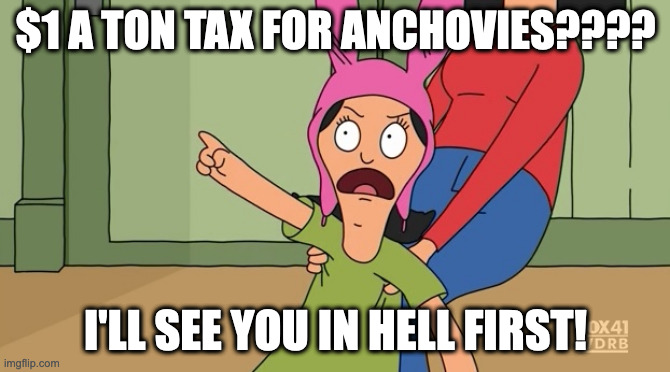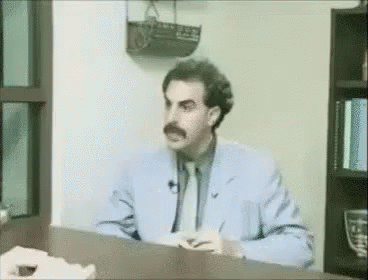There have been some interesting developments in Peru, as lefty President
Pedro Castillo attempted his own autogolpe.

Peru’s Congress on Wednesday voted to remove President Pedro Castillo after he attempted to dissolve the legislative body following their third attempt to remove him from office.
Lawmakers voted 101-6 with 10 abstentions to remove Castillo from office for reasons of “permanent moral incapacity.”
I love the phrase permanent moral incapacity. If it caught on here, half of our political class would be forcibly retired.
Vice President Dina Boluarte was quickly sworn in to replace Castillo. The 60-year-old lawyer took the oath of office and became the first female leader in Peru’s history.
Her swearing-in capped hours of uncertainty as both the president and Congress appeared to exercise their constitutional powers to do away with each other. She said her first order of business would be to address government corruption.
They did it to him before he could do it to them.
Peru President Pedro Castillo announced the dissolution of congress and called for legislative elections to draft a new constitution hours before an impeachment debate, greatly escalating a political crisis and putting the Latin American nation’s democracy under threat.
“We took the decision of establishing a government of exception toward reestablishing the rule of law and democracy,” Castillo said in a televised speech Wednesday, adding that the incoming congress will draft a new constitution within nine months. “From today and until the new congress is established, we will govern through decrees.”
“Government of exception” is an awful fancy way of saying “dictatorship.”
Castillo’s move was met with nationwide protests and outrage by the Peruvian constitutional court which called the dissolution of Congress a coup, and said that Castillo is no longer president. Meanwhile, the Congress – which apparently did not get the memo that it has been dissolved – started the Castillo impeachment session early, and will most likely vote to remove the president.
Castillo’s move was hardly unprecedented, as previous Peruvian President Alberto Fujimori famously conducted his own successful autogolpe (auto coup) to purge the Peruvian government (and judiciary) of corruption. He would then defeat the Maoist Shining Path insurgency, be elected to two more terms as President, and then flee the country and resign by fax before being indicted on his own corruption charges. (He would eventually return to serve his prison term and receive a pardon that was later annulled by a court.)
This offers us an opportunity to look at the history of Peru’s governments from the sort of deep, informed vantage point that only 15 minutes of browsing Wikipedia can provide. Even if you limit it to Post-WWII presidents, that history is not a happy one.
After troops loyal to the government crushed the revolt, President Bustamante suspended all civil rights.
The insurrection, he declared, had been the work of the APRA Party. Under the President’s orders, government troops occupied the APRA headquarters, seized the plant of its newspaper, La Tribuna, and arrested several prominent Apristas. But for the Military Cabinet, those moves were not enough. Postwar economic problems and strife caused by strong labor unions led to a military coup on October 29, 1948, which led Gen. Manuel A. Odria to become the new President.
Bustamante went into exile, then returned. Despite that whole “suspended civil rights and crushed rival political parties” thing, “In 1960 he was elected a member of the International Court of Justice in The Hague and served as its President from 1967 to 1969.” Died in Lima.
After two years, he resigned and had one of his colleagues, Zenon Noriega, take office as a puppet president so he could run for president as a civilian. He was duly elected a month later as the only candidate.
So much democracy!
Odriua came down hard on APRA, momentarily pleasing the oligarchy and all others on the right. Like Juan Peron, he followed a populist course that won him great favor with the poor and lower classes. A thriving economy allowed him to indulge in expensive but crowd-pleasing social policies. At the same time, however, civil rights in the nation were severely restricted and corruption was rampant throughout his regime. People feared that his dictatorship would run indefinitely; they were surprised when Odria legalized opposition parties in 1956 and called fresh elections. He did not run for office. He was succeeded by a former president, Manuel Prado.
Stayed active in politics, died in Peru. After:
Three main candidates participated in the Peruvian presidential elections of 10 June 1962: Victor Raul Haya de la Torre, founder and leader of the APRA, future president Fernando Belaunde, and former dictator Manuel A. Odria. Haya de la Torre gained most of the votes according to the official results, one percentage point ahead of Belaúnde.
However, none of the candidates reached the margin of one-third of the votes needed to become president.[citation needed] Therefore, the final decision lay with the Peruvian Congress. Haya de la Torre and Odría formed an alliance in order to install Odria as the new president.
At 3:20 in the morning of 18 July 1962 at the Presidential Palace, one of the thirty tanks stationed outside gunned its engine and rammed through the black wrought-iron gates. Manuel Prado, the constitutional President of Peru, was thrown out of office in a coup, just ten days short of completing his six-year term.
Perez Godoy, as Chairman of the Joint Chiefs of Staff, headed the military junta formed by high-ranked members of the Peruvian Military Force: General Nicolas Lindley, commander of Peru’s army; Vice Admiral Juan Francisco Torres Matos, Admiral of the Navy; and General Pedro Vargas Prada, chief of the air force. Once in the Palace, the four-man junta administered its own swearing-into office. The soldiers then suspended all constitutional guarantees, dissolved Parliament, arrested Electoral Tribunal officials “for trial” and promised “clean and pure elections” scheduled for June 9, 1963.
Snip.
Promising a “New Peru”, Pérez Godoy pushed through a 24% increase in the budget and decreed new taxes to pay for it, including a one dollar-a-ton levy on anchovies that provoked a strike and threatened to close down the thriving fishmeal industry.

And when he refused to approve the construction of a new hospital for Vargas Prada’s Air Force and six new ships for Torres Matos’ national steamship line, the other junta members turned on him.
What a tragedy it is when there’s no honor among coup leaders! If only Shakespeare had warned us…
He was deposed by the junta’s next man in line, Army General Nicolas Lindley, who swiftly moved into the presidency on March 3. Lindley restored the schedule for democratic elections and turned over the office of president to election winner Fernando Belaúnde.
Politically pressured from all sides, [he] failed in enacting successful political and economic reform.
A Constituent Assembly convened by the Morales Bermudez administration was created in 1978, which replaced the 1933 Constitution enacted during Oscar R. Benavides’s presidency. After elections were held in 1980, he returned power over to the first democratically elected government after 12 years of military rule, headed by President Fernando Belaunde.
One of his first actions as President was the return of several newspapers to their respective owners. In this way, freedom of speech once again played an important part in Peruvian politics. Gradually, he attempted to undo some of the most radical effects of the Agrarian Reform initiated by Velasco, and reversed the independent stance that the Military Government of Velasco had with the United States.
Snip. “During the next years, the economic problems left over from the military government persisted.” Followed by:
His economic policy was based on APRA’s initial anti-imperialist values with García distancing Peru from international markets, resulting in lower investment in the country. Despite his initial popularity among voters, Garcia’s term in office was marked by bouts of hyperinflation, which reached 7,649% in 1990 and had a cumulative total of 2,200,200% over the five years, which destabilized the Peruvian economy. Foreign debt under Garcia’s administration increased to $19 billion by 1989. Owing to this chronic inflation, the Peruvian currency, the sol, was replaced by the inti in February 1985 (before his presidency began), which itself was replaced by the nuevo sol (“new sun”) in July 1991, at which time the new sol had a cumulative value of one billion (1,000,000,000) old soles.
According to studies by the National Institute of Statistics and Informatics and the United Nations Development Programme, around the start of his presidency, 41.6% of Peruvians lived in poverty. During his presidency, this percentage increased by 13% (to 55%) in 1991. Garcia also made an attempt to nationalise the banking and insurance industries. The International Monetary Fund and the financial community recoiled after Garcia’s administration unilaterally declared a limit on debt repayment equal to 10% of the Gross National Product, thereby isolating Peru from international financial markets.
His presidency was marked by world-record hyperinflation with the annual rate exceeding 13,000 percent per year. The administration devastated the local economy as well as all governmental institutions. Hunger, corruption, injustice, abuse of power, partisan elitism, and social unrest raised to dramatic levels spreading throughout the whole nation due to Garcia’s misdeeds and incompetence, spurring terrorism. The economic turbulence exacerbated social tensions and contributed in great part to the rise of the violent Maoist rebel movement known as the Shining Path, which launched the internal conflict in Peru and began attacking electrical towers, causing a number of blackouts in Lima. The period also saw the emergence of the Tupac Amaru Revolutionary Movement (MRTA).
He was so unpopular he didn’t even run in 1990, so he was succeeded by Alberto Fujimori, a surprise winner in a runoff against the free-market oriented novelist (and later Nobel Prize laureate) Mario Vargas Llosa.
His administration was characterized by the beginning of the country’s macroeconomic boom, promoting foreign investment, the signing of free trade agreements, and the implementation of various investment projects in infrastructure and human development. At the same time, Toledo suffered a governance crisis, scandals in his personal life, and allegations of corruption against his inner circle, signs that hit his popularity until he fell to 8% of popular approval.
Snip.
On 16 July 2019, Toledo was arrested in the United States for an extradition order to Peru, as reported by the Peruvian Public Ministry. On 8 August, attorney Graham Archer, requested a request for release on bail before judge Thomas Hixson. On 12 September, the judge ruled his request for reconsideration inadmissible. On 19 March 2020, he was released on bail.On 28 September 2021, a U.S. District Court approved the extradition of Toledo, ruling that evidence presented in the case against Toledo were “sufficient to sustain the charges of collusion and money laundering” under the U.S. Peru Extradition Treaty.
Followed by:
Throughout Garcia’s second term, Peru experienced a steady economy, becoming the fastest growing country in Latin America in 2008, surpassing China in terms of rising GDP. The economic success of his presidency would be acclaimed as a triumph by world leaders, and poverty was reduced from 48% to 28% nationally. In addition, Peru signed free trade agreements with the United States and China during García’s presidency, but accusations of corruption would persist throughout his term and beyond.
After leaving office: “Died from a self-inflicted gunshot to the head as police officers under a prosecutor’s orders were preparing to arrest him” on corruption charges as part of the Odebrecht scandal. Next up:
First impeachment
Main article: First impeachment process against Pedro Pablo KuczynskiOn 15 December 2017, the Congress of the Republic initiated impeachment proceedings against Kuczynski, with the congressional opposition stating that he had lost the ″moral capacity″ to lead the country after he admitted receiving advisory fees from scandal-hit Brazilian construction company Odebrecht while he was Peru’s Minister of Economy and Finance between 2004 and 2005. Kuczynski had previously denied receiving any payments from Odebrecht, but later confessed that his company, Westfield Capital Ltd, had been receiving money from Odebrecht for advisory services, while still denying that irregularities existed in the payments.
Fujimori pardon snipped.
Second impeachment, Kenjivideos and resignation
After further scandals broke out surrounding Kuczynski, a second impeachment vote was to be held on 22 March 2018. Two days before the vote, Kuczynski stated that he would not resign and decided to face the impeachment process for a second time. The next day on 21 March 2018, a video was released of Kuczynski allies, including his lawyer and Kenji Fujimori, attempting to buy a vote against impeachment from one official.
Followed by:
On 9 November 2020, the Peruvian Congress impeached Vizcarra a second time, after declaring him “morally incompetent”; he was removed from office.[9] The President of Congress and opposition leader, Manuel Merino, succeeded him as President of Peru the following day. Vizcarra’s impeachment incited the 2020 Peruvian protests, as many Peruvians and political analysts believed the impeachment was unsubstantiated, with several Peruvian media outlets labeling the impeachment a “coup”. Vizcarra was banned from holding public office for 10 years after allegedly jumping the line to get a COVID-19 vaccine, with an 86–0 vote in congress.

Bringing us back, finally, to:
Castillo was noted for appointing four different governments in six months, something which had no precedent within Peruvian political history. He faced two impeachment proceedings in the Peruvian Congress, although both failed to reach the necessary votes to remove him from office.
Following the second failed impeachment vote, a series of protests across the country took place due to the rising fuel prices and instability allegedly generated by Castillo’s administration, which largely affected transportation workers. His administration was not able to find a solution to the political crisis, as it escalated in addition to mining protests as the country’s economy plummeted. Castillo ultimately left the Free Peru party in June 2022 to govern as an independent. In July 2022, a fifth inquest was launched into Castillo’s alleged corruption involvements.
Bringing us to the third impeachment and his removal from office.
It’s a rich tapestry of political dysfunction.
Well, that’s more like three hours of Wikipedia reading, but it does drive home the point that the very moment anyone takes office as President in Peru, the deck is stacked against them…